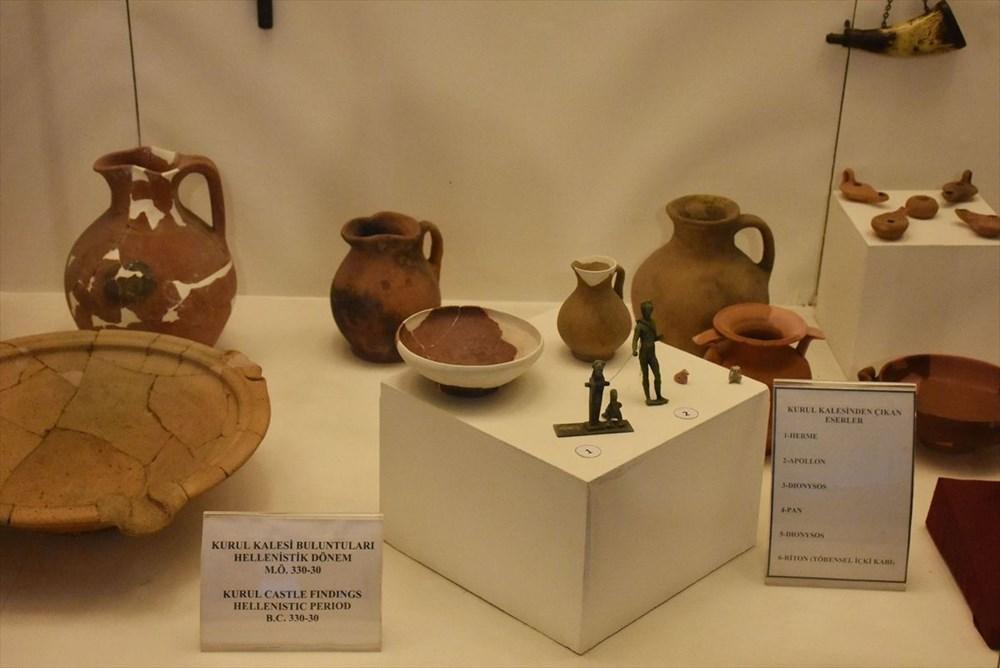
More than 20 busts and masks, which were unearthed in the 2,300-year-old Ordu Kurul Castle and estimated to be 2,100 years old, will be exhibited at the Ordu Paşaoğlu Mansion and Ethnography Museum.
Speaking to the state-run Anadolu Agency, Provincial Culture and Tourism Director Uğur Toparlak said that the Ordu Kurul Castle, which is located within the borders of Bayadı neighborhood of Ordu’s Altınordu district, is the first archaeological and scientific excavation site in the Eastern Black Sea region.
Stating that the excavations in the castle, which started in 2010, continued with the support of the Culture and Tourism Ministry, the Turkish Historical Society and the Ordu Metropolitan Municipality, he emphasized that very important artifacts have come to light as the results of the ongoing excavation at the architectural structure.
Toparlak reminded that a one-meter marble statue of the mother goddess Kybele was found in 2016. “As a result of the ongoing studies, the other parts of Kybele were also found.”
“This castle was also used as a military area. We found war materials and coins of the period. By examining these, we reached the historical coding of the region, especially the castle. In this sense, we have determined that the castle has a history of 2,300 years,” he said.
Stating that excavations continued last year in the northern part of the castle under the presidency of Ordu Museum Directorate and the scientific consultancy of Ankara Hacı Bayram Veli University’s head of Archeology Department, Professor Süleyman Yücel Şenyurt, Toparlak said: “The castle was not only used in war and military fields, we also saw the traces of ritual activities. We found more than 20 terracotta busts and masks, which are the biggest proof of this. We also unearthed cultural assets related to living spaces.”
He stated that they had moved all of the cultural assets taken from the area to the Ordu Paşaoğlu Mansion and Ethnography Museum. “At the moment, cleaning operations are being carried out. All of the works will be registered in the inventory and transferred to the exhibition hall of the museum.”
Noting that the cleaning process of busts and masks has reached the final stage, Toparlak said that they would be placed in the display area after being registered in the inventory so that visitors would be able to see the works.
Pointing out that Ordu Kurul Castle has aroused excitement as it is the first archaeological excavation site in the region, Toparlak said, “It is a center of attraction. I hope it will shed new light on the history of our army in the future.”
Ordu Kurul Castle has the status of an area where archaeological excavations can be made for 12 months, he said, adding that that the works will continue in the same way this year.
He said that in the winter period, the working areas were covered with canvas and that they plan to continue working without interruption regardless of weather conditions.
Emphasizing that the archaeological excavation is of historical importance, Toparlak said, “This place has become a very important archaeological center in the Black Sea region.”
“Hopefully, in the coming days, the castle will be included in UNESCO’s Tentative List of World Heritage. In this sense, it will become more attractive. Ordu and the Black Sea region will have a very important destination,” he said.
Speaking about the possibility of finding more important artifacts, Toparlak said: “The excavations will continue for many years because we think that many more important artifacts, both religious and archaeological, can be found here.”